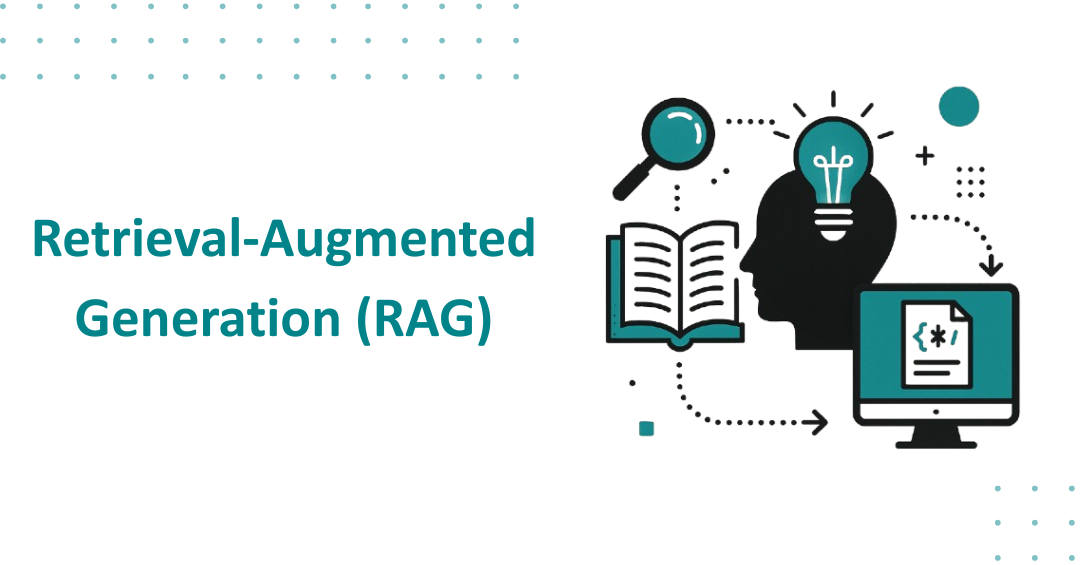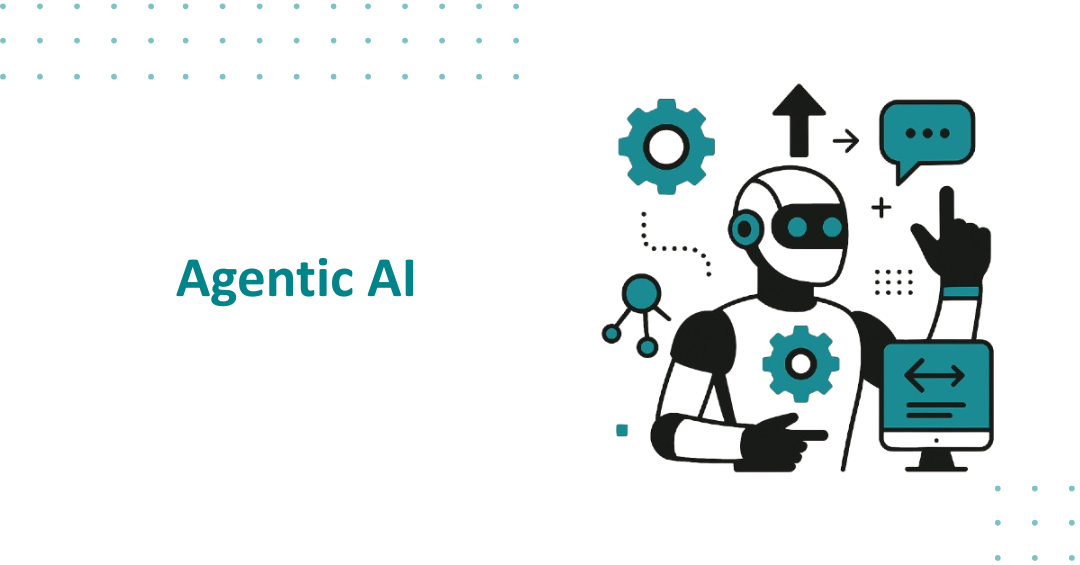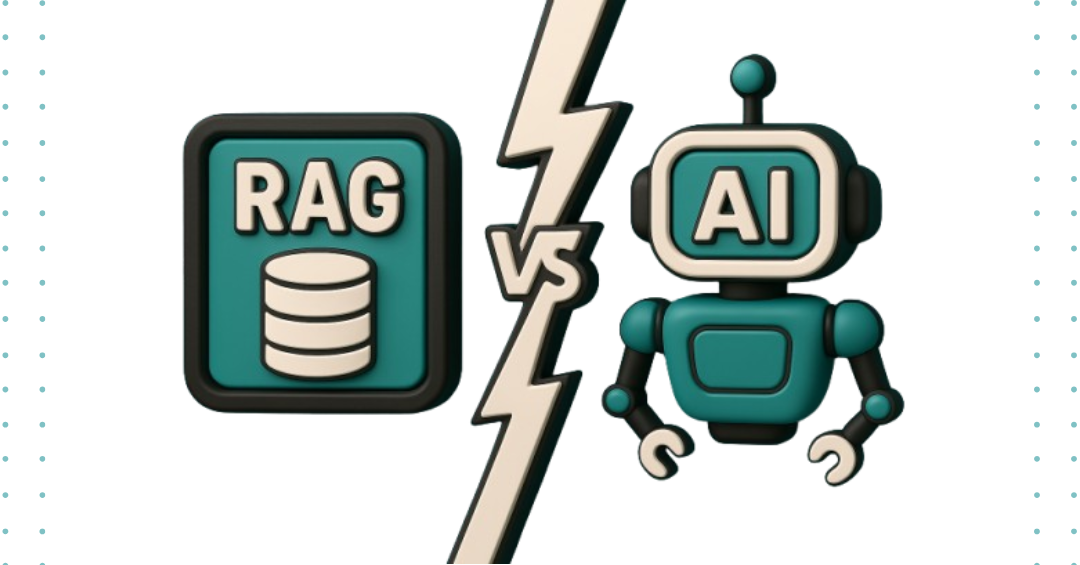
The speed of development of artificial intelligence systems has led to sophisticated systems that can write like a human, complete work on their own, and improve cognitive knowledge processing. Two of these systems, Retrieval-Augmented Generation (RAG) and Agentic AI, will reshape our interactions with AI systems in the real world.
Although both extend the capabilities of foundational language models (LLMs), they do so in fundamentally different ways and represent two distinct types of LLM solutions shaping how enterprises adopt AI. This blog dives deep into what RAG and Agentic AI are, how they differ, and when to use them, along with real-world applications from industry-leading use cases. Whether you’re comparing RAG vs Agentic AI or exploring where each excels, this guide offers clarity.
What is Retrieval-Augmented Generation (RAG)?
Retrieval-Augmented Generation is an architecture designed to supplement a language model’s internal knowledge with external data. RAG applications are particularly useful in contexts where factual accuracy and up-to-date information are critical. Large Language Models, despite being trained on vast corpora, are inherently limited by their training cut-off and lack of real-time context. RAG addresses this limitation by incorporating a retrieval mechanism that fetches relevant documents, snippets, or structured data at query time.
How It Works:
- Input Query → Passed to a retriever (like dense vector search via FAISS, Pinecone, or Elasticsearch).
- Retriever → Locates top-k relevant documents from an external corpus (knowledge base, enterprise documents, academic papers, etc.).
- LLM → Takes the retrieved context and generates a grounded response.
Benefits of RAG:
- Reduces hallucinations by grounding answers in real data.
- Enables domain-specific QundefinedA without retraining the model.
- Easy to update knowledge (just update the retrieval store).
- Transparent and auditable responses (users can see source docs).
Popular Tools undefined Frameworks:
- LangChain (RAG chains, vectorstore integrations)
- LlamaIndex (data connectors, document indexing)
- Haystack (pipelines for RAG and semantic search)
- OpenAI’s Retrieval Plugin for GPT
LangChain RAG implementations are especially popular for enterprises looking to build scalable, modular AI assistants using vector-based search and prompt chaining.
What is Agentic AI?
undefineda class="code-link" href="https://www.seaflux.tech/blogs/agentic-ai-autonomous-systems-applications" target="_blank"undefinedAgentic AIundefined/aundefined refers to systems where an AI acts as an autonomous AI agent, capable of planning, reasoning, making decisions, and executing actions, sometimes in a goal-driven loop without user intervention. These agents use LLMs at the core but are empowered with tools like web access, APIs, file systems, and memory.
How It Works:
- Receive a high-level goal or task (e.g., “Analyze this dataset and generate a presentation.”)
- Agent decomposes it into steps using planning or chain-of-thought reasoning.
- Executes steps autonomously using tools: runs code, fetches data, and interacts with APIs.
- Loops back through planning and execution until the task is completed.
Key Capabilities:
- Tool Use: Search engines, databases, code interpreters, file management, UI automation.
- Memory: Stores previous steps/results for reflection or long-term learning.
- Reflection undefined Planning: Rewrites its approach if prior attempts fail (AutoGPT, BabyAGI).
Popular Frameworks undefined Tools:
- AutoGPT (autonomous goal execution)
- LangChain Agents (action planning + tool use)
- OpenAI Function Calling
- CrewAI (multi-agent collaboration with roles)
- AgentOps (monitoring and debugging agents)
Core Differences: RAG vs Agentic AI
Aspect | RAG | Agentic AI |
Objective | Enhance LLM output with factual context | Achieve multi-step goals autonomously |
User Input | Query-based (QundefinedA style) | Goal- or task-based (e.g., "create a report") |
Autonomy | Reactive and stateless | Proactive and goal-driven |
Tool Use | Retrieval only (search/query) | Any tool or API (code, DBs, email, browser) |
Memory Usage | Optional, short-term context | Often has long-term and short-term memory |
Examples | Search-enhanced chatbots, legal QundefinedA | AutoGPT, dev agents, workflow bots |
Setup Complexity | Medium – needs retrieval infra | High–need tool orchestration, observability |
Explainability | High (retrieved docs visible) | Moderate (chains of reasoning and actions) |
Real-World Applications by Use Case
From enterprise chatbots to scientific summarization, RAG applications are expanding rapidly across industries as practical LLM solutions for data-driven environments.
RAG in Action
1. Enterprise Knowledge Assistants
- Problem: Employees struggle to locate info across wikis, policies, and SOPs.
- Solution: A RAG chatbot retrieves answers directly from enterprise knowledge bases (e.g., Microsoft SharePoint, Confluence).
- Example: Atlassian’s AI assistant helps developers navigate documentation and resolve dev issues.
LangChain RAG pipelines are frequently used in such knowledge assistants for seamless integration with enterprise data sources.
2. Medical Literature Summarization
- Use Case: Bio-researchers query PubMed via a RAG system.
- Value: Generates literature reviews with citations from peer-reviewed journals in seconds.
3. Legal undefined Regulatory QundefinedA
- Challenge: Lawyers need accurate references from case law or government policies.
- RAG Value: Combines vector search with fine-tuned LLMs to deliver legally grounded answers with cited sources.
4. Customer Support Deflection
- Example: Notion AI, Zendesk AI use a RAG chatbot approach to resolve support tickets faster using help docs and FAQs.
Agentic AI in Action: Real-World Use Cases and Agentic AI Examples
1. AI Research Assistants
- Scenario: A user gives a prompt, “Research top 10 competitors in the XYZ domain.” This is one of many agentic AI examples where a system autonomously executes multi-step research tasks.
- Agent Behavior: It queries search engines, extracts website info, summarizes insights, creates a report, and emails it.
- Example: AutoGPT or LangGraph agents performing autonomous research. These tools are often used to create a fully functioning autonomous AI agent that can deliver end-to-end insights with minimal human input.
2. Developer Copilots
- Functionality: Code agents auto-debug, test, or generate projects.
- Tool Use: File I/O, GitHub access, CLI tools, test runners.
- Popular Tools: Devika, Smol Developer, OpenDevin.
3. Finance undefined Ops Automation
- Example: An AI agent monitors AWS usage, alerts on cost anomalies, sends budget updates to Slack, and adjusts policies via Terraform. This type of agentic AI automation streamlines IT operations and minimizes human intervention in repetitive monitoring tasks.
4. Multi-Agent Collaboration
- Tool: CrewAI
- Use Case: Assigns roles (e.g., Researcher, Planner, Coder) to different agents working toward a shared goal (e.g., build a SaaS MVP).
Can RAG and Agentic AI Be Combined?
Yes. While the RAG vs Agentic AI debate often highlights their contrasts, hybrid systems, sometimes framed as RAG vs Agentic RAG comparisons, are emerging as the most effective architecture in enterprise and developer environments. These systems are often referred to as agentic RAG, combining the dynamic planning and tool use of agents with retrieval-based grounding of RAG.
Real Example:
An agentic AI assistant might:
- Plan a report-writing task,
- Use RAG to retrieve domain-specific knowledge (say, sales data, industry benchmarks),
- Write and summarize content,
- Format the result into a PowerPoint deck,
- Email it all autonomously.
This synergy allows for both accuracy (via RAG) and autonomy (via agents). Agentic RAG systems allow businesses to deploy end-to-end intelligent workflows grounded in both data and decision-making.
Choosing the Right Approach
If you need to… | Use RAG | Use Agentic AI |
Answer factual questions with references | YES | NO |
Automate multi-step workflows | NO | YES |
Provide chat access to proprietary knowledge | YES | NO |
Interact with APIs, databases, or tools | NO | YES |
Enable autonomous research, writing, or coding | NO | YES |
Minimize complexity and cost | YES | NO |
Build a smart copilot with tool access | Combine both | Combine both |
The Future: Towards Autonomously Grounded AI
As enterprises seek more reliable, scalable, and actionable AI systems, both RAG and Agentic AI are playing critical roles. The next generation of enterprise copilots, autonomous agents, and industry-specific assistants will rely on hybrid frameworks that combine:
- The factual accuracy of RAG, and
- The multi-step reasoning and execution capabilities of agents.
Final Thoughts
The RAG vs Agentic AI comparison highlights two powerful dimensions of applied LLMs, each with unique strengths and roles. As agentic AI automation becomes more advanced, its ability to handle end-to-end enterprise tasks autonomously will continue to grow. One grounds AI in knowledge, the other enables it to act. Understanding their mechanics, use cases, and synergies will help product teams, developers, and enterprise architects design intelligent systems that are not just generative but truly intelligent.
Need help building a RAG pipeline or deploying an autonomous AI agent tailored to your business?
At Seaflux, we’re a undefineda class="code-link" href="https://www.seaflux.tech/custom-software-development" target="_blank"undefinedcustom software development companyundefined/aundefined offering tailored AI development services to solve real-world business challenges. From undefineda class="code-link" href="https://www.seaflux.tech/ai-machine-learning-development-services" target="_blank"undefinedcustom AI solutionsundefined/aundefined to production-ready undefineda class="code-link" href="https://www.seaflux.tech/voicebot-chatbot-assistants" target="_blank"undefinedRAG chatbotsundefined/aundefined, we build intelligent systems that are accurate, scalable, and aligned with your goals.
As a trusted AI solutions provider, we also develop undefineda class="code-link" href="https://www.seaflux.tech/ai-machine-learning-development-services/conversational-ai" target="_blank"undefinedcustom chatbot solutionsundefined/aundefined and agentic AI workflows designed to automate complex tasks and boost efficiency.
Let’s connect. undefineda class="code-link" href="https://calendly.com/seaflux/meeting?month=2024-02" target="_blank"undefinedSchedule a meetingundefined/aundefined today to explore how Seaflux can turn your AI vision into reality.

Dhrumi Pandya
Marketing Executive









